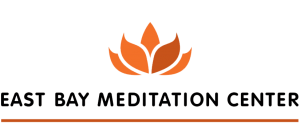Crystal Johnson’s Gratitude Story: Practices for Liberation
In this week’s Season Of Gratitude, Leadership Sangha member and teacher Crystal Johnson reflects on how practices for liberation require tackling the messy…
EBMC is a place that challenges and holds me at the same time. I first came to EBMC’s Friday night practice group, now called Maha Sangha, shortly after the center’s doors opened in 2008. I was looking for a dharma community where people were trying to grapple with the suffering that many other dharma centers don’t want to talk about, like that of racism, classism, sexism, and gender-based discrimination. I hadn’t found that elsewhere, and had kind of given up.
Yet at EBMC, there’s a willingness to tackle the messy, difficult and uncomfortable dynamics that exist among us, which is what I have found is necessary to really connect with people who are different from me in important ways (even as we share a common humanity). I see this effort to end separation as a central commitment to reducing suffering and moving all of us towards liberation.
This has been especially true in my experience co-teaching EBMC’s six-month long program, White and Awakening in Sangha (WAS), where I could explore my own white privilege through the practice of holding space for other white folks. WAS is designed for white practitioners to come to understand our whiteness as clinging to a delusion that brings suffering to ourselves and others, and to see that accepting the system of white privilege doesn’t align with our dharma practice.
In WAS, we aren’t doing this work to feel like we are helping people of color. We’re doing it for our own freedom and the freedom of everyone, because it’s all tied together. Over the years, I’ve come to understand this work as a practice of reparation, repairing and restoring, where we move white people into taking action where action wasn’t being taken before. Where we often hear the idea of “me and my needs”, EBMC centers the question, “how does this work for everybody?”, which I understand to mean sustaining EBMC beyond the center, and instead sustaining EBMC as a community.
This is why EBMC’s financial model of Gift Economics strikes me as a practice for freedom. Gift Economics is the antidote to the poison of narcissistic, materialistic capitalism. It’s the cure for the painful life that we’ve been taught to live–that of getting as much as you can for yourself. Supporting the community, at the highest level we can, means that we all get to be here to practice and act towards the liberation of all beings. What could be more fabulous?
In community,
Crystal Johnson
******
Dharma friend,
What are your practices for liberation? At EBMC, one of ours is keeping our programs accessible to all who come seeking an end to suffering, regardless of ability to pay. We do this through Gift Economics, where those in the community sustain the community.
We are nearly halfway to our year-end goal of raising $25,000! Thanks to a generous Sangha member, all gifts will be doubled through December 31st, up to $10,000.
Thank you for all you do to support the liberation of all beings.




